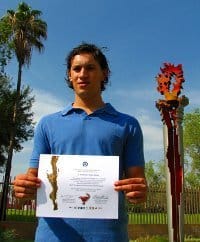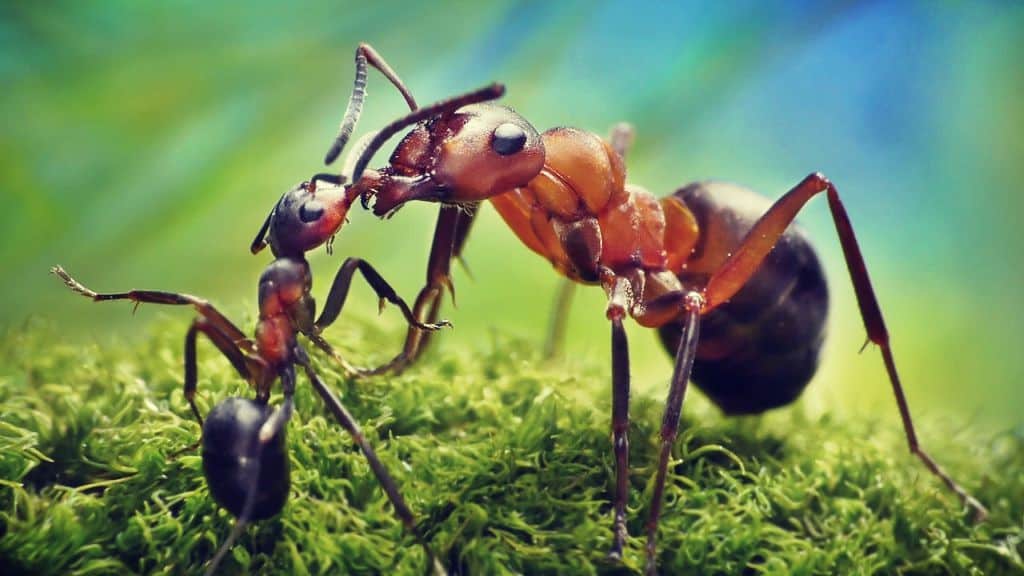There is an old Anglo-Saxon saying that proclaims: “When the ants fortify their home, the clouds will unleash their rain.” These small insects have evolved over millions of years, sharpening their sensitivity to the point of being able to perceive atmospheric ions, solar polarization and magnetic and pressure fields.
Predicting Natural Phenomena Through Ant Behavior
It is this incredible ability of ants that could open doors to predicting natural events as varied and devastating as earthquakes, tsunamis, tornadoes and rain.

This mysterious behavior of ants attracted the attention of Heriberto Vélez Garza, a dedicated Physics student at UANL. Driven by curiosity, Vélez Garza delved into the research.
“My study focused on the physical variables that influence ant behavior. My goal was to understand how this insect mechanism could be transferred to an electrical circuit as a biosensor,” he shared.
Understanding Natural Sensors
During his research, Vélez Garza, who was in his ninth semester at the Faculty of Physical-Mathematical Sciences, managed to decipher the complexity of these natural sensors. Moreover, he understood how these systems could be adapted to human fabrications, allowing better preparation for sudden environmental changes.
He reflected: “While humans are sensitive to certain environmental variations, insects, in my research, proved to be excellent detectors of changes. My ambition is to design a circuit that can identify climatic fluctuations to predict atmospheric phenomena.”
This deep scientific immersion originated from a conversation with his mentor, Francisco Hernández Cabrera. Together they explored the possibility of using insects to predict storms and hurricanes.
This collaboration culminated in an acclaimed study titled “Characterization and Mechanical-Wave Analysis of the Stridulatory Organ of Atta Mexicana.”
This study earned Vélez Garza the award for best student work at the XLIV National Entomology Congress 2009, held in San José del Cabo, Baja California Sur.
Ecology and the Intricate Insect Behavior
With the project underway, the team sought opportunities to present it and found the Mexican Society of Entomology Congress. “Despite being surrounded mainly by biologists, my physics background provided me with a unique perspective.
It was a rewarding experience that allowed me to represent my university with dignity and enjoy the natural beauty and diversity of San José del Cabo,” Vélez Garza reflected.
Francisco Hernández, a specialist in Electronic Systems at the Faculty of Physical-Mathematical Sciences, had met Heriberto five semesters earlier.
Together they discovered that eusocial insects, like ants, are capable of detecting tiny physico-chemical variations and reacting to imminent changes in the environment.
Hernández expressed: “Heriberto has done an excellent job, now we have preliminary results that describe how these ants respond to external stimuli. This communication is essential for understanding the nature and behavior of these insects.”
Advances Towards Climate Prediction
There are historical records showing how certain insect behaviors can indicate climate changes. “By observing a trail of leaf-cutting ants, one can foresee a change in the weather,” mentioned Hernández Cabrera.
Such a change can be anticipated days, weeks, or even months in advance. It is this evolutionary ability, developed over millions of years, that Vélez Garza and his mentor hope to harness.
“Our goal is to use what nature has already proven and adapt it to predict natural phenomena,” added Hernández Cabrera.
The Future of Atmospheric Physics
With a promising path ahead, Vélez Garza plans to dedicate his career to atmospheric physics. His current research will serve as the basis for his thesis and he aspires to design a weather station that can predict environmental changes. The research continues to develop.
“We have a clear understanding of how ants communicate and the signals they emit within the colony. These insects have an advanced perceptive system that can detect changes in pressure, temperature, humidity and molecular composition of the environment,” noted Francisco Hernández.
The recognition received from the Mexican Society of Entomology has further boosted Vélez Garza’s motivation. “This study is not simply based on superficial observations. We have worked hard on the research and sought variables to formalize the study,” shared Vélez Garza.
Wonders of the Ant World
An ant in danger will emit a characteristic sound to alert its companions. This communication, along with other behavior patterns, demonstrates that an ant colony operates as a superorganism.
Human interaction with the ecosystem has reduced our innate ability to predict natural events, highlighting the importance of natural sensors, such as ants.
We extend our sincere gratitude to Lizbet García Rodríguez from the Autonomous University of Nuevo León for her valuable contribution to this article.




